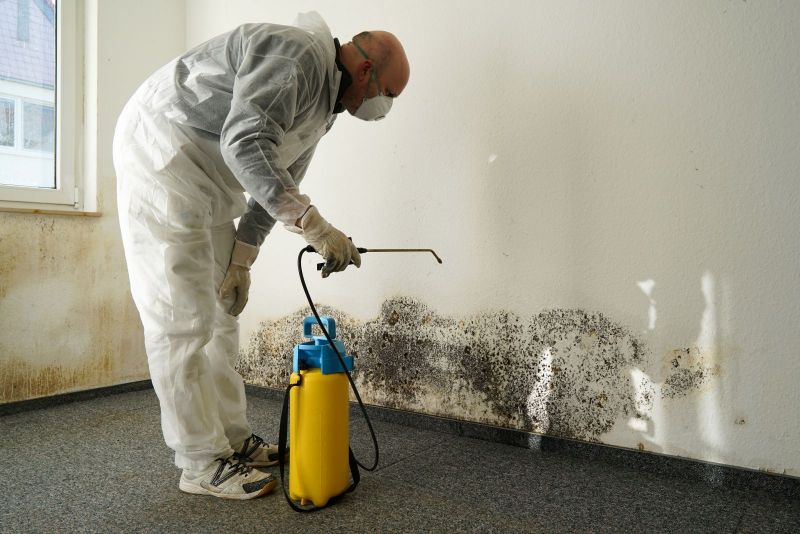Water is a source of life. It is one of those essential elements for life to begin, grow, and flourish. Humans are made of mostly water and so are most other living things. One thing that sets our planet apart is the amount of water that is located on earth. Water, though, can have a dark side. If contaminated, water can be a source of diseases that can cause symptoms, such as upset stomachs and can, if not treated, kill. Water can also provide the breeding grounds for other harmful microorganisms that are not friendly to humans living in close proximity. Because of this, water damage should never be taken lightly.
Water Damage: Slow Destruction
Though it has never been proven that mold, even the feared black mold, can actually kill someone on its own, the effects of the mold can have deadly effects on a human living in constant contact with air polluted by mold spores. Water damage isn’t just deadly for families living in homes contaminated by mold, it is also extremely destructive for your home itself. Mold and water eat at the materials of your home, making them weak and ineffective. Because the mold grows and anchors itself in the wood or other materials of your home, the basic structure that was once strong is now unable to perform its intended duty of adding structure to your home and is now the habitation of mold.
Causes of Water Damage
Water damage can be caused by a variety of factors. Oftentimes, water damage is associated with catastrophic floods that are the result of extreme rainstorms. This is definitely a cause, but there are more. Water damage can be caused by leaky pipes, insufficient dehumidifying, flooding caused by a backed up sewer, and groundwater that is not adequately drained. Water damage can be seen as bulges or ripples in the walls or ceiling of your home, but can also go unseen. Typically, if a water damage expert is checking a home for water damage, they always look above the water line. Water damage can affect all of the materials that make up your home, including the drywall, insulation, concrete (constant erosion can create expensive repairs), and building timbers.
Mold Remediation: 5 Steps
If you ever find yourself with water damage to your home or business in Greater Cincinnati and Northern Kentucky or beyond, know that there is someone to help. Paramount Restoration offers water damage services and mold remediation and testing. We understand the serious implications that water damage and mold can have on your home or business and can assist you in putting your property back together. Though each situation is handled on a case-by-case basis, here is what to expect if you call us.
Assessment
As with any disaster project, mold remediation starts with assessment. As mentioned, sometimes the extent of the damage goes beyond what the eye can see, and missing any of it will spell the need for mold remediation services in the near future. Oftentimes, mold can grow under carpets, above ceiling tiles, inside walls, and even the duct system. When you call us, we can offer you professional mold testing services as well.
Repair the Water Problem
Repairing the water problem is also a first step in repairing your home or business. Contact a water damage professional to find out where the water is coming from and if there is one problem area or several. We have professional plumbers who can help you with repairs and keep the water flowing in and out of your home properly and only where it is supposed to be.
Remove Materials
One of the next steps is to remove wet and affected materials. This includes all damaged property and parts of the building structure. Wet and moldy materials should be wet before removal to avoid mold spores from being freed and placed in a plastic bag or container and destroyed.
Clean
The next step in the mold remediation process is to clean. Materials such as wood and other porous materials should be cleaned with detergents and mold removal chemicals and then rinsed with water. Often a wire brush is needed to scrub all remaining mold particles off. Rags and other cleaning implements should be treated with care and also cleaned—if applicable—or destroyed. Cleaning may also involve vacuuming with a HEPA vacuum as well.
Dry
After the area has been properly cleaned and passed a visibility test with no dirt or other contaminants in the area, the area is left to dry so that there is no leftover moisture. Often fans and dehumidifiers are used to speed the process.
Repaired & Repair
After all mold has been removed and the area is completely dry, the next step is to repair the area: install new carpet, repair the drywall, etcetera.
Are you dealing with water damage or afraid you may be in need of mold remediation in your home or business in Greater Cincinnati and Northern Kentucky? Paramount Restoration can help. Our water damage assessment specialists and our expert mold remediation contractors can help you find the root and extent of the problem and can provide the mold testing and mold remediation that you need.
Visit our website to learn more and schedule an appointment! And stay tuned for more posts on our blog about water damage, fire restoration, and other related topics!

